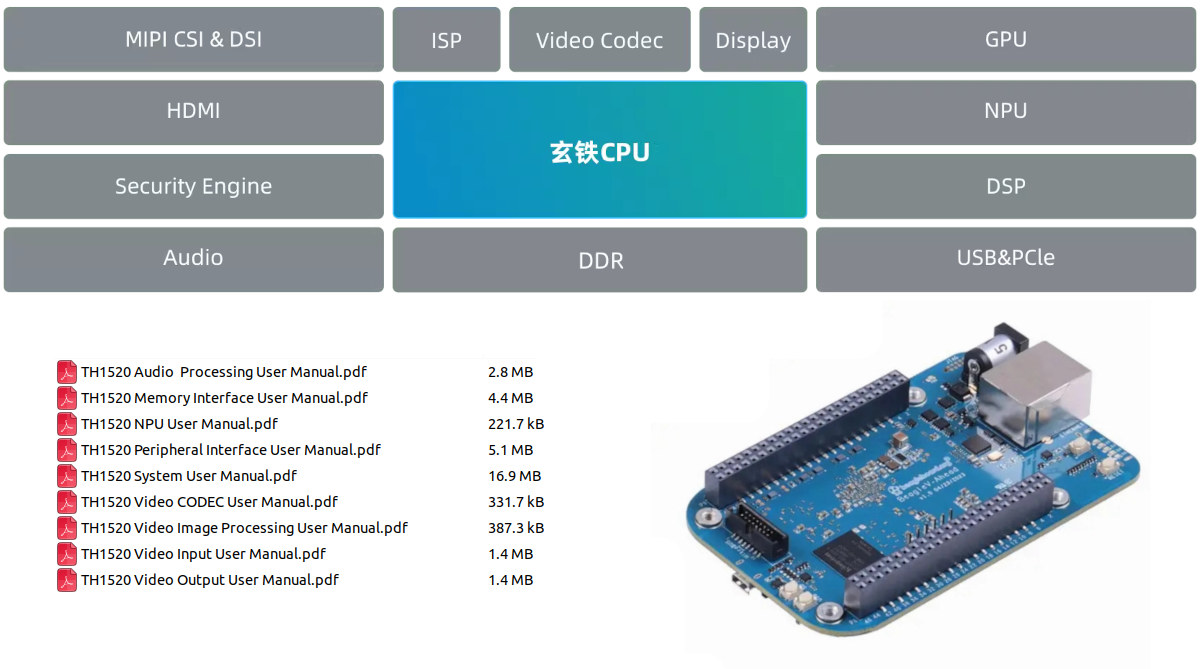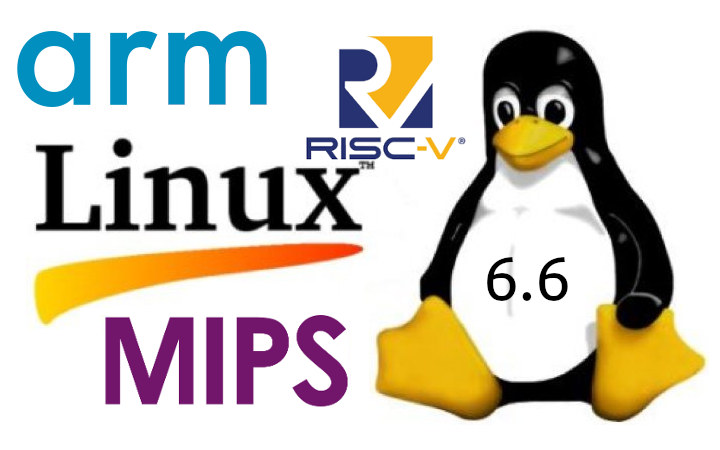We’ve been writing about international Black Friday and Cyber Monday deals and coupon codes since 2014, as US-centric promotions such as Amazon’s Black Friday and Cyber Monday deals are not always available to the international audience of CNX Software. So once again, we’ve searched at Black Friday and Cyber Monday 2023 international promotions and discount codes from specific manufacturers as well as popular online stores such as Aliexpress, Banggood, and others. Aliexpress Black Friday and Cyber Monday event Aliexpress will have a Black Friday (and Cyber Monday) event in 2023, but we have limited details at this time since it will only start on November 23, contrary to some of the other deals we’ll feature below which are already up and running. But the event will have two periods: Nov 20-22 PT – Warm Up event where users can find and add items to the cart before purchasing during the […]
Gigadevice GD32VW553 RISC-V microcontroller supports WiFi 6 and Bluetooth 5.2 LE
Gigadevice GD32VW553 is a new 160MHz RISC-V microcontroller for IoT applications with support for WiFi 6 (802.11ax) and Bluetooth 5.2 Low Energy (LE) and available in QFN32 and QFN40 packages with up to 28 GPIOs. As an IoT chip, the chip supports various power modes and target wake time (TWT) for low power consumption, as well as WiFi features such as WPA3 and WiFi direct, while the radio can handle Bluetooth 5.2 LE bit rates of up to 2 Mbps and support the Long Range mode. Gigadevice GD32VW553 specifications: MCU core – 32-bit Nuclei N307 RISC-V core @ up to 160 MHz with RV32I / M / A / F / D / C / P / B instruction extensions Memory – 320KB SRAM Storage – 2048KB or 4096KB flash Wireless WiFI 6 802.11b/g/n/ax HT20 up to 114.7Mbps 802.11e QoS Enhancement (WMM). 802.11i (WPA, WPA2, WPA3). Open, shared key, and […]
Giveaway Week 2023 – WCH CH583M-R0 development board and some RISC-V microcontrollers
Early this year, WCH sent me a few of their RISC-V MCU boards and chips to thank me for writing about their products. I gave one for review with some chips but it went to review heaven, or in other words, no review was ever written. I also sold a couple locally, and since I don’t think I’ll ever have time for a review, we are now giving away the remaining boards and chips here and on CNX Software Thailand. Today’s giveaway is the WCH CH583M-R0-1v1 board, also known as CH583EVT or CH583M-EVT-R0, based on the CH583 RISC-V Bluetooth 5.3 LE microcontroller that exposes all I/Os from the chip, a few buttons, and USB ports, and also features an SWD/UART header for debugging. You’ll find the documentation, code samples, an Android app and other resources to get started on GitHub. I’ll also throw all the remaining chips I have left […]
$150 BeagleV-Fire SBC features Microchip PolarFire RISC-V SoC FPGA, supports BeagleBone capes
BeagleV-Fire is a new single board computer powered by Microchip PolarFire MPFS025T penta-core RISC-V SoC FPGA that follows the BeagleBone Black form factor for compatibility with BeagleBone capes expansion boards. Microchip PolarFire RISC-V SoC FPGA was one of the first Linux-compatible RISC-V SoCs and was found in pricey boards such as the Icicle and TySOM-M-MPFS250 development boards. I also got an Icicle board for review, and while getting started with the Yocto Linux BSP was OK, I really struggled with the FPGA part including just installing Libero SoC in Ubuntu and going through the license, and even I gave up trying to run a bitstream sample on the board due to a lack of time. The BeagleV-Fire makes it much cheaper to try out the PolarFire and hopefully makes it easier to get started with both Linux and the FPGA fabric through easier-to-understand documentation and code samples. BeagleFire-V specifications: SoC […]
Arm makes strategic investment in Raspberry Pi
Arm has just acquired a minority stake in Raspberry Pi through a strategic investment in order “to deliver critical solutions for the Internet of Things (IoT) developer community.” Paul Williamson, SVP and GM, Internet of Things Line of Business, Arm explains the rationale behind the investment: Arm and Raspberry Pi share a vision to make computing accessible for all, by lowering barriers to innovation so that anyone, anywhere can learn, experience and create new IoT solutions. With the rapid growth of edge and endpoint AI applications, platforms like those from Raspberry Pi, built on Arm, are critical to driving the adoption of high-performance IoT devices globally by enabling developers to innovate faster and more easily. This strategic investment is further proof of our continued commitment to the developer community, and to our partnership with Raspberry Pi. Eben Upton, Raspberry Pi founder and CEO, also provided remarks: Arm technology has always […]
Alibaba T-Head TH1520 user manuals released
Further Alibaba T-Head TH1520 quad-core RISC-V processor documentation has been released with nine user manuals covering video and audio processing, peripheral interfaces, memory interfaces, system registers, and the built-in NPU for video acceleration. We first noted the TH1520 RISC-V SoC in the expensive web3-focused ROMA laptop in October 2022, but since then there have been some very interesting developments with the release of Sipeed’s Lichee Pi 4A SBC and various other platforms based on the LM4A system-on-module plus the BeagleBoard.org’s BeagleV Ahead. Both boards also have preliminary support in mainline Linux with the Lichee Pi 4A making it to Linux 6.5, and the BeagleV Ahead was added to the just-released Linux 6.6 kernel. However I had not noticed documentation for the processor was not released publicly until now as both Sipeed and Beagleboard.org have now made available nine user manuals in English, and the Sipeed link has the Chinese versions […]
Linux 6.6 LTS release – Highlights, Arm, RISC-V and MIPS architectures
The Linux 6.6 release has just been announced by Linus Torvalds on the Linux Kernel Mailing List (LKML): So this last week has been pretty calm, and I have absolutely no excuses to delay the v6.6 release any more, so here it is. There’s a random smattering of fixes all over, and apart from some bigger fixes to the r8152 driver, it’s all fairly small. Below is the shortlog for last week for anybody who really wants to get a flavor of the details. It’s short enough to scroll through. This obviously means that the merge window for 6.7 opens tomorrow, and I appreciate how many early pull requests I have lined up, with 40+ ready to go. That will make it a bit easier for me to deal with it, since I’ll be on the road for the first week of the merge window. Linus About two months ago, […]
CanMV-K230 AI development board features Kendryte K230 dual-core 64-bit RISC-V processor
CanMV-K230 is a credit card-sized development board for AI and computer vision applications based on the Kendryte K230 dual-core C908 64-bit RISC-V processor with built-in KPU (Knowledge Process Unit) and various interfaces such as MIPI CSI inputs and Ethernet. The first Kendryte RISC-V AI processor was launched in 2018 with the K210 which I tested with the Grove AI HAT and Maixduino board and found fun to experiment with, but noted that performance was limited. Since then the company introduced the K510 mid-range AI processor with a more powerful 3 TOPS AI accelerator, and the K230 entry-level successor to the K210 – which was planned for 2022 in a 2021 roadmap – has now just been launched and integrated into the CanMV-K230 development board. CanMV-K230 specifications: SoC – Kendryte K230 CPU 64-bit RISC-V processor @ 1.6GHz with RISC-V Vector Extension 1.0, FPU 64-bit RISC-V processor @ 800MHz with support for […]










